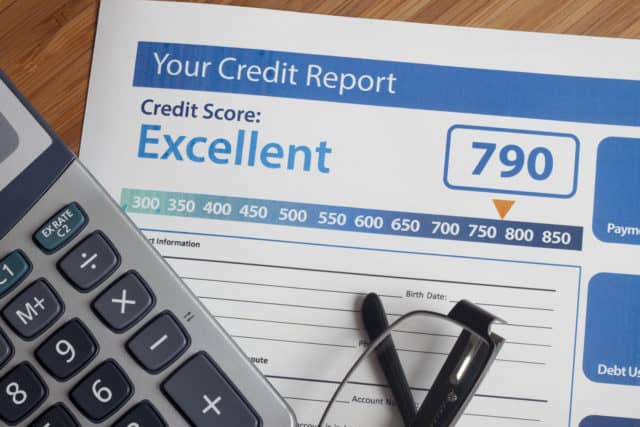Wealthtender is a trusted, independent financial directory and educational resource governed by our strict Editorial Policy, Integrity Standards, and Terms of Use. While we receive compensation from featured professionals (a natural conflict of interest), we always operate with integrity and transparency to earn your trust. Wealthtender is not a client of these providers. ➡️ Find a Local Advisor | 🎯 Find a Specialist Advisor

Be crazy… like a fox!
You know the old saying, “Fight fire with fire”?
It kind of has a nice ring to it, right?
Here’s a nice twist on it – using credit card issuers’ setups to claw back a bunch of money they charge you. Isn’t that poetic justice?
But is it realistic? Can you really use credit cards to get out of debt faster?
Yes, you can. Keep reading, and I’ll show you how.
A Typical Example
The average American household with credit card debt owes $7149 and pay an average of $1155 a year in credit card interest. Many families are in a far deeper credit card hole.
We’ll take as an example the Smith family. The Smiths carry 3 credit cards, and have a total credit card debt of $10,000. Their card debt is distributed as follows:
- The lowest-interest card charges 18% interest and has a $3000 balance.
- The second-lowest-interest card charges 21% and has a $2000 balance.
- The highest-interest card charges 24% (yes, some charge that or even more) and has a $5000 balance.
Each of these cards requires a minimum payment equal to the higher of $25 or 1% of the new balance plus interest plus fees. If the total balance is under $25, the minimum is equal to the total balance.
While many people will hire a financial advisor or work with a financial coach to develop a personalized debt payoff plan based on their individual circumstances, the Smiths just decided they’re going to do whatever it takes to get out of credit card debt. Let’s see their options and how each one pans out.
Plan 1: Minimum Payments Only, But Stop Digging
The Smiths know they shouldn’t charge anything new on their cards, but their finances aren’t in great shape, so they still need to charge about $500 a month for various expenses.
There’s this serious joke they heard: “What’s the first thing you do if you find that you’ve dug yourself into a hole? Stop digging!”
So they vow to pay off at least the minimum payment on each card. They’ll charge the $500 in new charges on their lowest-interest card, then each month they’ll pay off that extra $500 on top of the minimum payment, plus the extra interest the card issuer charges on that $500.
Their minimum payments start out at $579 for the first card (including the $500 in new charges), $55 to the second card, and $150 to the third.
It takes a while, but they finally manage to pay off the middle card. As soon as that happens, they start charging the $500 in new charges each month on that card, to avoid paying any interest on it.
The good news is that over time, as they pay down their debt, their monthly minimum payments go down, so they’re less stressed.
The bad news is that paying just the minimum means the Smiths end up paying a total of $25,397 to pay off their $10,000 in credit card debt. It takes them 234 months, or 19.5 years, and they pay nearly $15,400 in interest, more than their entire original debt.
Plan 2: A Far Better Option – the Snowball Method
Dave Ramsey’s favorite way of guiding people out of credit card debt is the so-called “debt snowball method.” Here, you pay the minimum on each card that has a balance, and as much extra as you can toward the card with the lowest balance.
For the Smiths, that’s the one with $2000 balance.
Again, they charge the new $500 on the lowest-interest card, and pay enough above the minimum payment that this new $500 plus the interest on it are paid off each month. Again, as soon as they pay off the middle card, they switch the $500 monthly purchases there, and pay no interest on that $500.
Their minimum payments are the same $579, $55, and $150 in the first month. However, the Smiths decide to bite the bullet and keep paying the same total amount, even as their balances slowly drop and the minimum payments with them.
They send the extra dollars toward the card with the $2000 initial balance.
Once they pay off that one, they shift all the dollars freed up toward the next-lowest-balance card.
Once they pay off that one too, the full monthly amount they’ve been paying goes toward the final card.
There is very good news here. Instead of 19.5 years, they manage to become debt free in less than 5 years. They save nearly 15 years of being in the hole, and almost $9200 in interest!
Plan 3: Another Great Option – the Avalanche Method
There’s a method that’s better than the snowball method, but it requires more discipline.
Here, the Smiths do everything the same, except that they send their extra dollars toward the card with the highest interest.
Once they pay off that one, they shift all the extra dollars toward the card with the next-highest interest.
Only once they pay off the other two cards do they send all their dollars toward the last, lowest-interest card.
Their initial payments are the same as above, and remain the same until their last month in the hole.
This method saves the Smiths an extra $86 relative to the snowball method. Not all that much, but when you’re in debt, every dollar counts!
Plan 4: Using the Credit Card Perks Against the Issuers
It turns out that the highest-interest card pays the Smiths 2% reward each month on any new purchases. Unfortunately, the reward doesn’t apply to the old balance.
Since the reward is 2% of the $500 monthly purchases, or $10 a month, and the interest is only half that, the Smiths use their reward card to make the $500 in new purchases each month. They then add the $10 reward to the payments they send to whichever card is the current target of the avalanche.
This tiny boost is enough to carve out an extra month from their time until they’re debt free, and saves them an extra $149.
The Smiths love it that they’re able to use their card’s perks to reduce how much they have to pay the issuers.
Plan 5: Using a Teaser-Rate to Carve Out a Bigger Bite Out of Your Debt
Here, the Smiths find a new and intriguing credit card offer.
This card also charges 24% (ouch!), but waives it completely for the first year – 0% for 12 months!
Even better, it offers the Smiths a free balance transfer from one other card and a $200 bonus after 3 months.
The Smiths are ecstatic!
They decide to use the Avalanche method, but will target the new card first, because they want to pay it down as much as possible before month 13 comes around along with the 24% interest rate.
They also decide to send the $200 bonus back to the issuer as soon as they get it, to pay the balance down even faster!
This method cuts their time in debt by another 9 months, and reduces their total interest payments by an extra $2700!
Now that’s not chump change!
In total, compared to making just the minimum payments, this method gets the Smiths out of debt in under 4 years, saving them over 15.5 years and over $12,000 in interest! Instead of paying half again as much as their original debt just in interest payments, they pay just about 1/5 of the interest!
How’s that for using credit card issuers’ tricks against them?

The Bottom Line
Walli Miller, Money Coach at Financially Thriving says, “Paying off debt can feel overwhelming.”
However, if you stop digging (i.e., don’t use the cards for any purchase you can’t pay at the end of the month), and use the snowball or avalanche method, you can save yourself a ton of money and years of debt-servitude.
If you have a card that pays rewards, you can use those to accelerate your credit card payments.
If you can get a new card with a 0% teaser rate and a cash bonus, you can use those to cut even more months of being in the hole, and lots more dollars off your total interest paid.
But that’s not the end of the story, as Walli confirms, “Once my clients eliminate high-interest debt and are no longer carrying credit-card balances, using credit cards and travel rewards is a great next step for some. Not only do you get cash back on basic monthly expenses, but you can also use rewards to reduce the cost of travel. Every hotel night or airplane ticket you can pay for using points frees money you can use for your other goals.”
Are you ready to enjoy life more with less money stress?
Sign up to receive weekly insights from Wealthtender with useful money tips and fresh ideas to help you achieve your financial goals.

About the Author
Opher Ganel
My career has had many unpredictable twists and turns. A MSc in theoretical physics, PhD in experimental high-energy physics, postdoc in particle detector R&D, research position in experimental cosmic-ray physics (including a couple of visits to Antarctica), a brief stint at a small engineering services company supporting NASA, followed by starting my own small consulting practice supporting NASA projects and programs. Along the way, I started other micro businesses and helped my wife start and grow her own Marriage and Family Therapy practice. Now, I use all these experiences to also offer financial strategy services to help independent professionals achieve their personal and business finance goals.
Connect with me on my own site: OpherGanel.com and/or follow my Medium publication: medium.com/financial-strategy/.
Wealthtender is a trusted, independent financial directory and educational resource governed by our strict Editorial Policy, Integrity Standards, and Terms of Use. While we receive compensation from featured professionals (a natural conflict of interest), we always operate with integrity and transparency to earn your trust. Wealthtender is not a client of these providers. ➡️ Find a Local Advisor | 🎯 Find a Specialist Advisor







